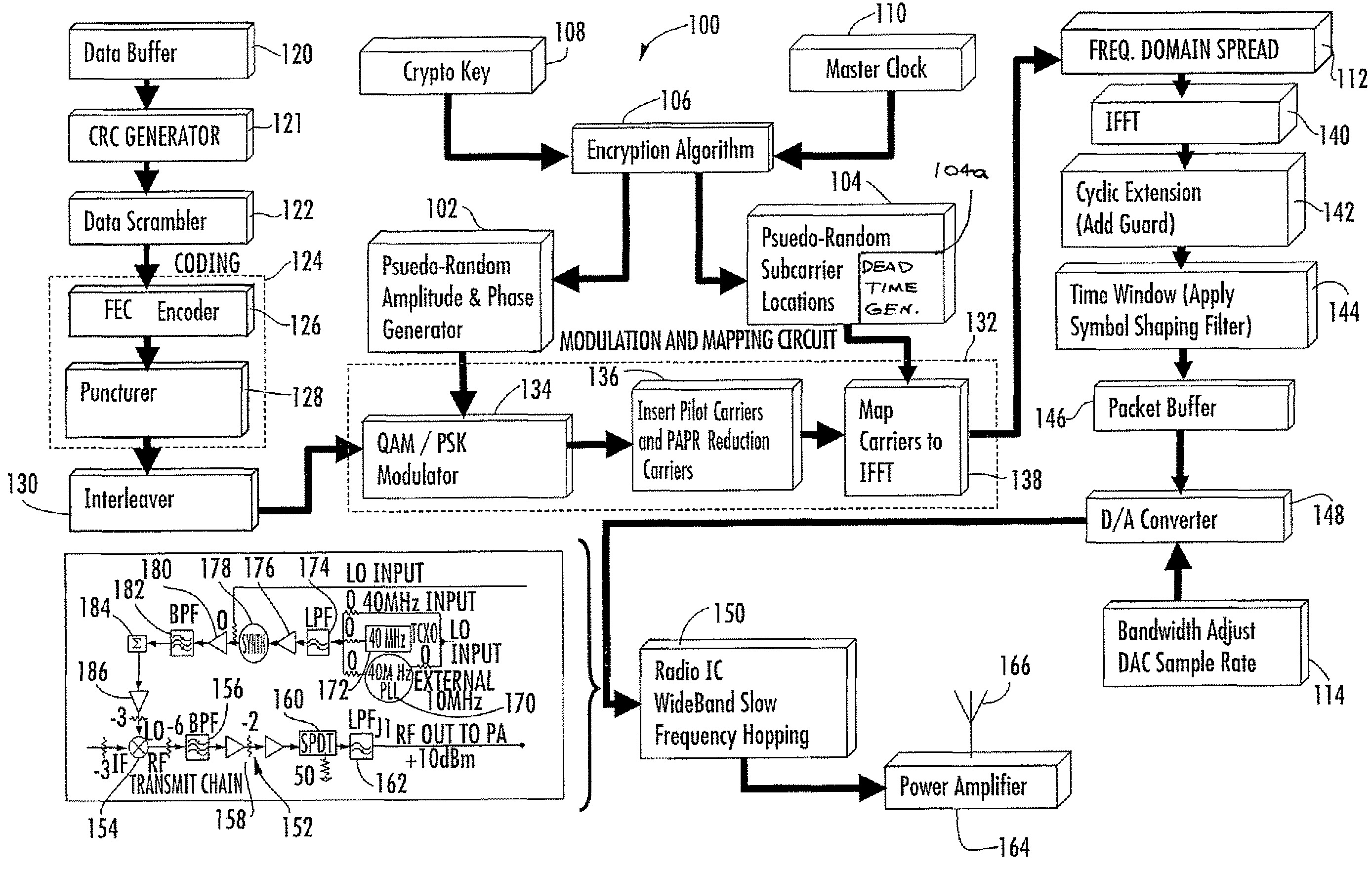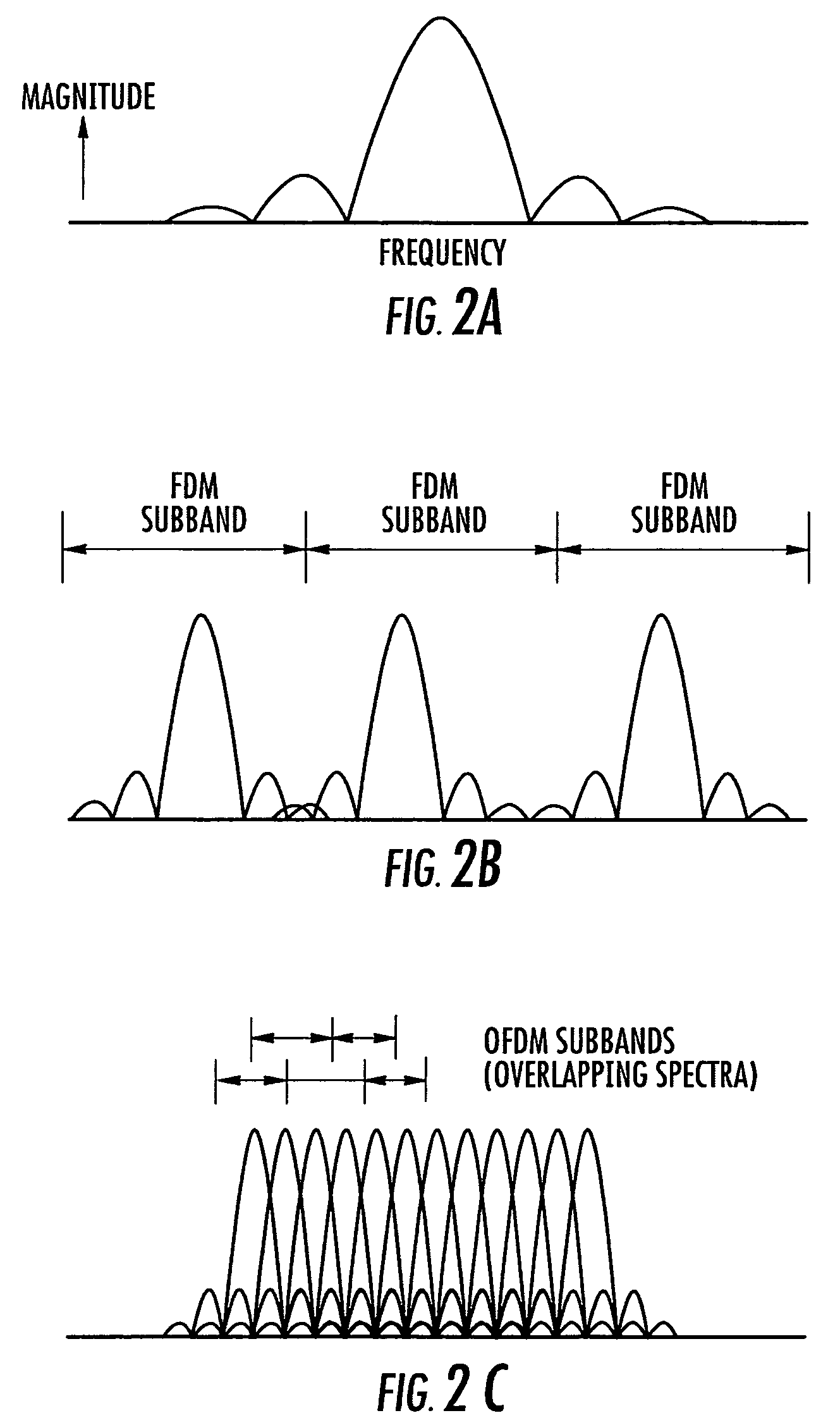System and method for communicating data using symbol-based randomized orthogonal frequency division multiplexing (OFDM) with selected subcarriers turned on or off
a frequency division multiplexing and symbol-based technology, applied in the field of multi-carrier communication systems, can solve the problems of unintentional noise of unwanted energy from other sources, inability to communicate data with selected subcarriers, and inability to detect signals, so as to reduce the probability of interception and detection, reduce the power per frequency, and reduce the effect of required transmission power
- Summary
- Abstract
- Description
- Claims
- Application Information
AI Technical Summary
Benefits of technology
Problems solved by technology
Method used
Image
Examples
Embodiment Construction
[0037]The present invention will now be described more fully hereinafter with reference to the accompanying drawings, in which preferred embodiments of the invention are shown. This invention may, however, be embodied in many different forms and should not be construed as limited to the embodiments set forth herein. Rather, these embodiments are provided so that this disclosure will be thorough and complete, and will fully convey the scope of the invention to those skilled in the art. Like numbers refer to like elements throughout.
[0038]The system, apparatus and method in accordance with a non-limiting example of the present invention uses a Symbol Based Randomization (SBR), Orthogonal Frequency Division Multiplexing (OFDM) communications signal to enhance the Low Probability of Interception (LPI) and Low Probability of Detection (LPD). This signal also allows an increased transmit power within a Federal Communications Commission (FCC) spectral mask by reducing the average power per...
PUM
 Login to View More
Login to View More Abstract
Description
Claims
Application Information
 Login to View More
Login to View More - R&D
- Intellectual Property
- Life Sciences
- Materials
- Tech Scout
- Unparalleled Data Quality
- Higher Quality Content
- 60% Fewer Hallucinations
Browse by: Latest US Patents, China's latest patents, Technical Efficacy Thesaurus, Application Domain, Technology Topic, Popular Technical Reports.
© 2025 PatSnap. All rights reserved.Legal|Privacy policy|Modern Slavery Act Transparency Statement|Sitemap|About US| Contact US: help@patsnap.com



